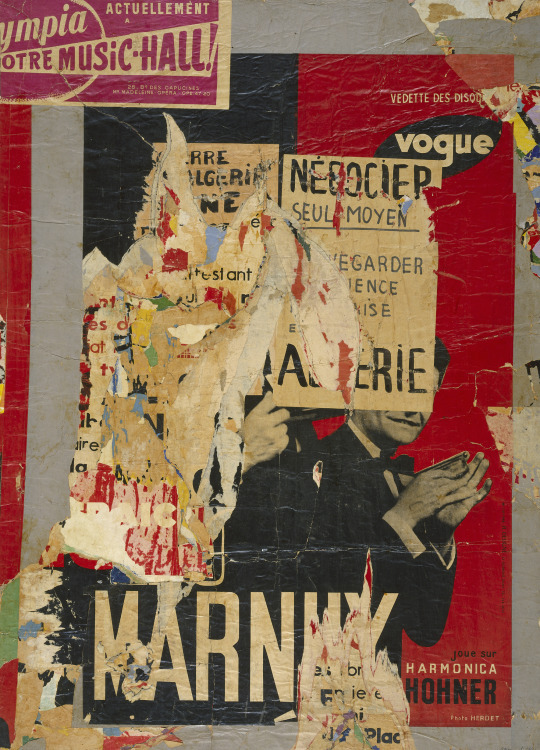#raymond hains
Text
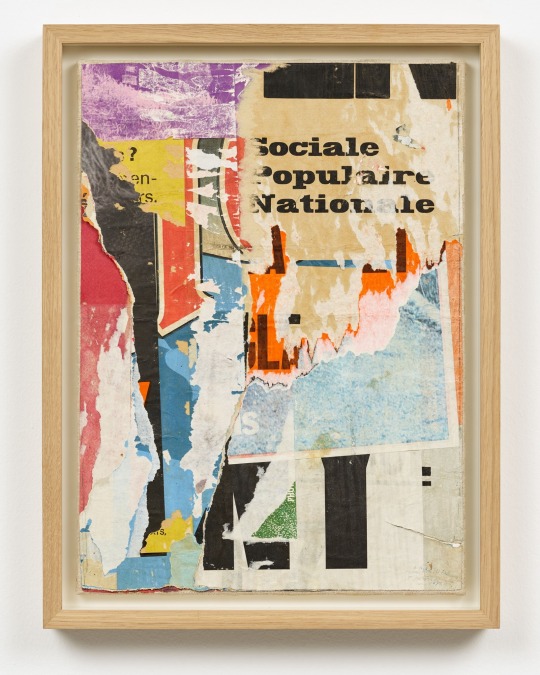
#Sociale Populaire Nationale#1973#torn posters mounted on canvas#50 х 36 ст.; 19 3/4 × 14 1/8 in. 57.5 × 43.5 cm.; 22 5/8 x 17 1/8 (framed)#Raymond hains
25 notes
·
View notes
Photo

Raymond Hains, Untitled, (décollage on metal sheet on plywood), 1959 [Galerie Tarica, Paris. Private Collection. © Raymond Hains]
128 notes
·
View notes
Text

Raymond Hains - Untitled (1968)
#arte#arts#art#painting#modern art#arte moderna#canvas#arte contemporanea#contemporary art#modern#Raymond Hains
31 notes
·
View notes
Photo
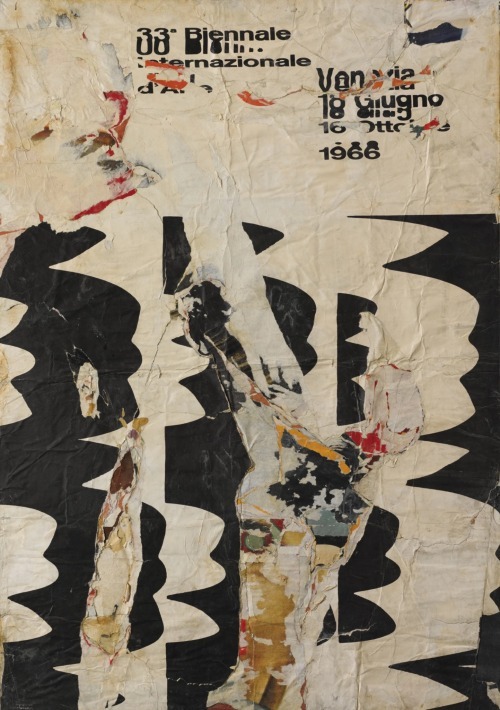
Raymond Hains
6 notes
·
View notes
Photo
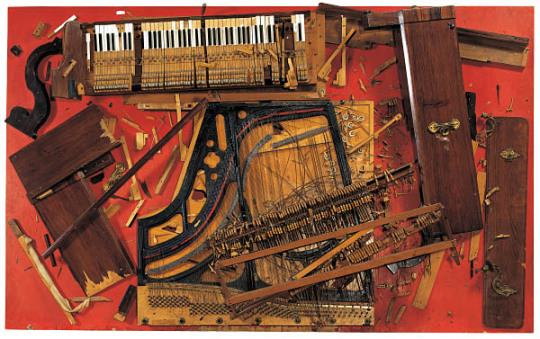
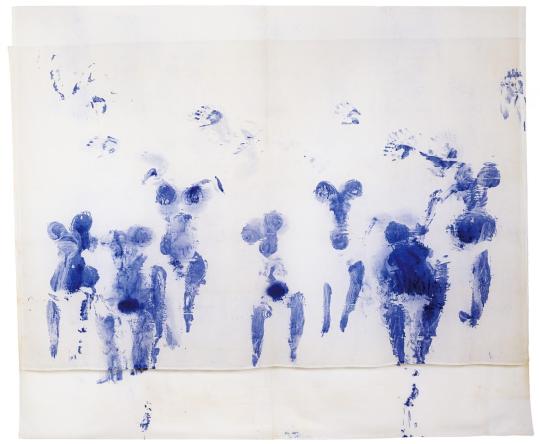
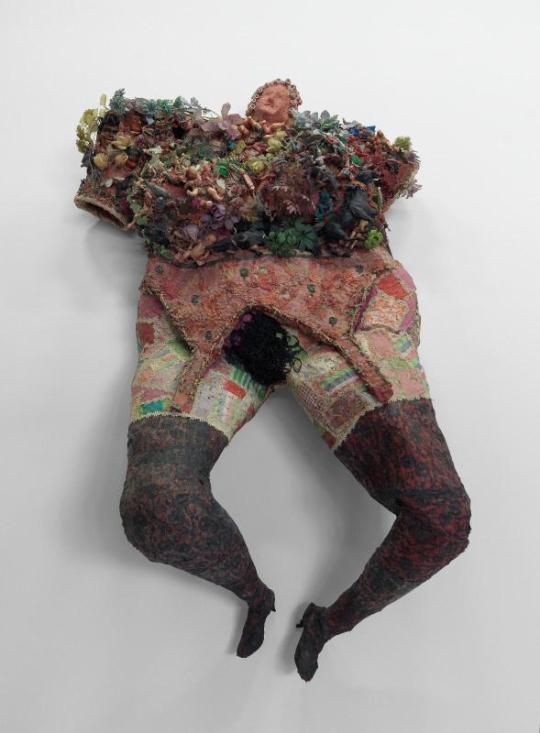
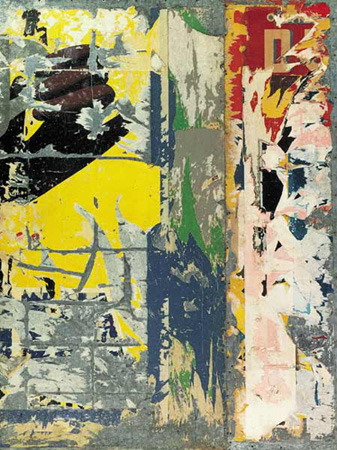

Cinq œuvres et un mouvement #4
Le nouveau réalisme
Yves Klein - Suaire de Mondo Cane (1961)
Arman - Chopin’s Waterloo (1962)
Niki de Saint Phalle - Crucifixion (1963)
Raymond Hains - Panneau d’affichage (1960)
Jean Tinguely - Baluba (1961-1962)
Le groupe des Nouveaux Réalistes est fondé en 1960 par le peintre Yves Klein et le critique d'art Pierre Restany lors de la première exposition collective d'un groupe d'artistes français et suisses à la galerie Apollinaire de Milan.
Il est crée lors de la publication de la Déclaration Constitutive du Nouveau Réalisme orchestrée par Pierre Restany, qui réunissait sous la même bannière des artistes revendiquant des pratiques diverses mais dont les travaux relèvent, selon lui, de « nouvelles pratiques du réel » visant à « mettre à mort la peinture de chevalet ».
Ce manifeste fut signé par Yves Klein, Arman, François Dufrêne, Jacques Villeglé, Raymond Hains, Daniel Spoerri, Jean Tinguely et Pierre Restany lui-même. Par la suite s’ajoutera d’autres grandes figures de l’art français : Nikki de Saint-Phalle, Mimmo Rotella, Gérard Deschamps et Christo.
Ces artistes reprennent les objets de la société pour en faire des reliques, des symboles puissants de la consommation avec comme volonté première de s’approprier le réel, que Restany qualifiait de “recyclage poétique du réel urbain, industriel, publicitaire », tout en explorant « la passionnante aventure du réel perçu en soi ».
Ce groupe fut en opposition avec le tachisme de cette l’époque, et était souvent présenté comme la version française du Pop Art Américain, incarne l'une des nombreuses tendances de l'avant-garde dans les années 1960. Le groupe se dissout en 1966.
#5 oeuvres et 1 mouvement#nouveau réalisme#new realism#peinture#painting#art#yves klein#Farmhouse in Upper Austria#françois dufrêne#jacques villeglé#raymond hains#daniel spoerri#jean tingueliy#pierre restany#nikki de saint-phalle#mimmorotella#mimmo rotella#gérard deschamps#christo#pop art#tachisme#avant garde
1 note
·
View note
Photo

#multiplication #of #ski #rossignol #fischer #dynamic #oldskul #raymond #hains #art #la #foire #deSkis (w: Muzeum nad Wisłą - Muzeum Sztuki Nowoczesnej w Warszawie) https://www.instagram.com/p/CoxjcSbIM5b/?igshid=NGJjMDIxMWI=
1 note
·
View note
Photo





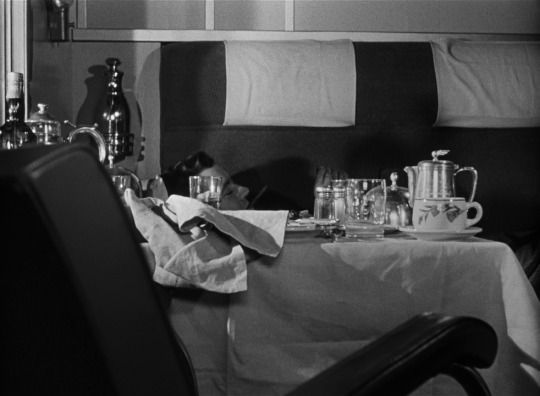



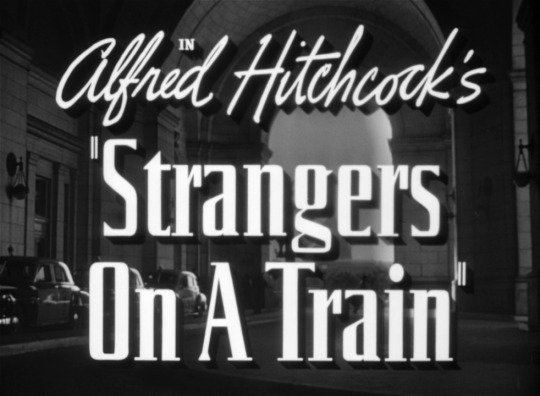
“Don't worry, I'm not going to shoot you, Mr. Haines. It might disturb Mother.“
Strangers on a Train, 1951.
Dir. Alfred Hitchcock | Writ. Raymond Chandler & Czenzi Ormonde | DOP Robert Burks
237 notes
·
View notes
Text


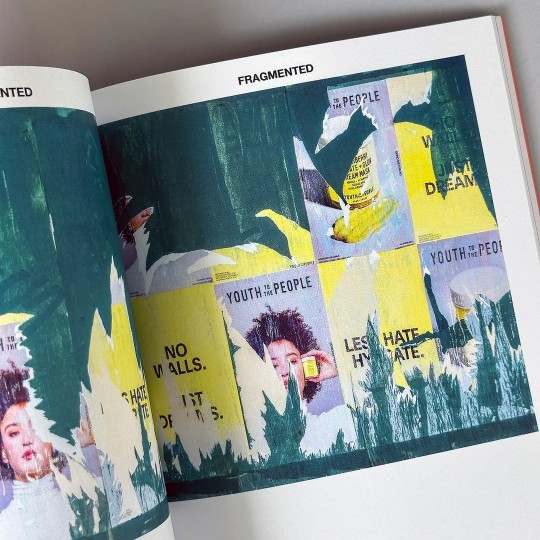
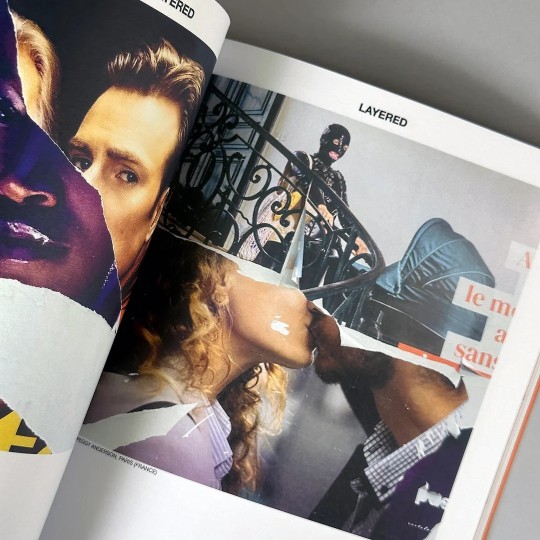
Rip it up!We love this newly cataloged title. Contents range from the anatomy of torn posters to an overview of grain and removal techniques, with photo-documentation of faded, fragmented, ghosted, and layered poster remnants.
A section on interventions and interpretations follows, tracing a migration from street to gallery, paper weavings, the transition from ads to art, poster painting, etc. Includes creative prompts!
In the late 1940s, artists like Mimmo Rotella, Raymond Hains, and Jacques Villeglé recognized the potential in these fragments, revealing the beauty of ripped posters through their works.
Can we truly appreciate these unintentional expressions in our everyday streetscape? Can we uncover their hidden stories and artistic potentials? This volume asks you to take a second look!
Designed by SerraGlia
Published by Other Editions, 2023
Printed in an edition of 300 copies
Softcover, 80 pages, 60+ full color images,
Available at Draw Down: https://draw-down.com/products/the-city-is-ours-4-torn-posters
28 notes
·
View notes
Text
Estate Sale Haul!
tagging my book buddies @televinita @simplyshelbs16xoxo and @loubuttons
the woman who owned the house was apparently a bit of a hoarder, but the people running the sale said that a lot of stuff had already been sold, so what I saw was no more cluttered than most estate sales. but this woman’s book collection was insane! books in every room of the house (though granted, it wasn’t a huge house).
most prominent genres were mystery, true crime, history, and cats. this is what I went home with:





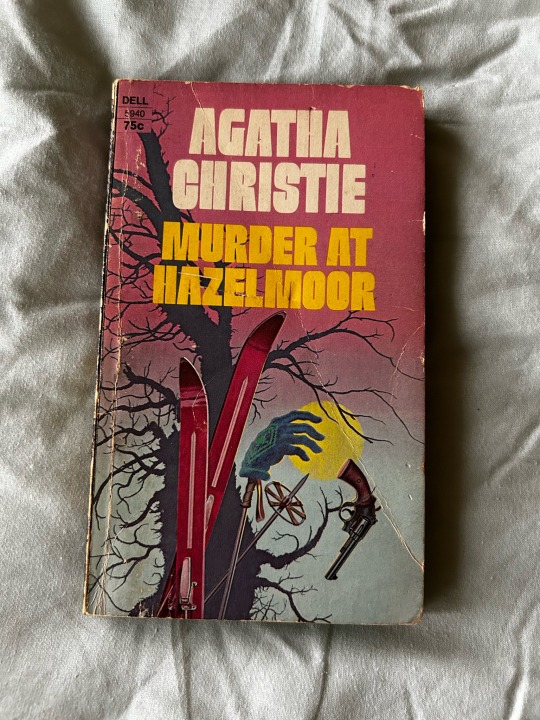
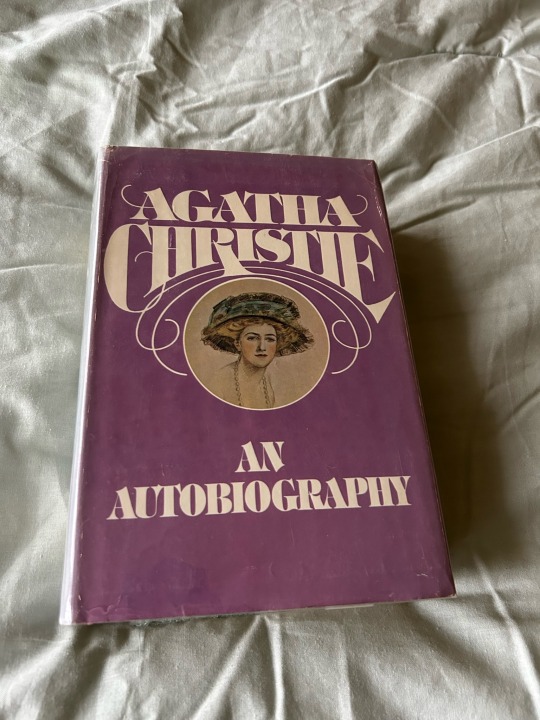
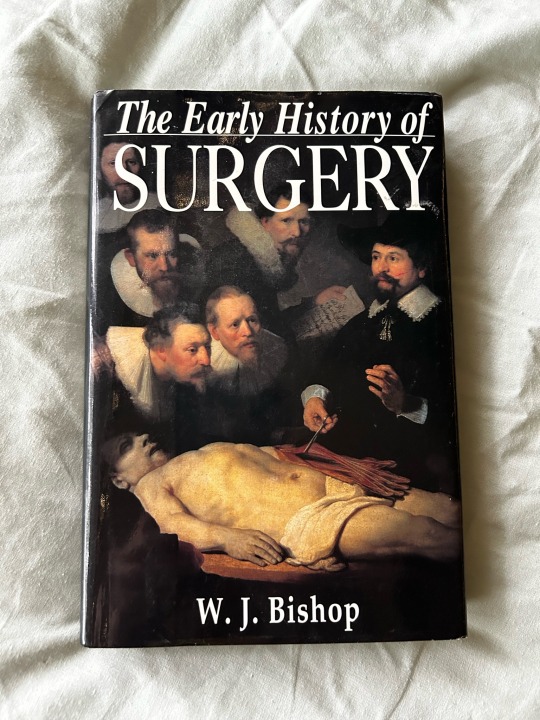

1. Unsolved Mysteries of American History (Paul Aron)
2. The Cases That Haunt Us (John Douglas and Mark Olshaker)
3. History Decoded: The 10 Greatest Conspiracies of All Time (Brad Meltzer)
4. The Crimes of Charlotte Brontë (James Tully) - this one is apparently written by a criminologist and is a fictionalized account of the ~mysteries~ surrounding the Brontë sisters. extremely mixed reviews on Goodreads, but I’m willing to give it a shot!
5. The Ultimate Encyclopedia of Mythology (Arthur Cotterell and Rachel Storm) - there were two different copies of this one, in different rooms
6. Murder at Hazelmoor (Agatha Christie) - there were actually a lot of Christies at the sale, but in an attempt at self-control (ha!), I limited myself to this one and the next:
7. Agatha Christie: An Autobiography - there were also two copies of this one
8. The Early History of Surgery (W.J. Bishop) - as a fan of the Sawbones podcast, I couldn’t pass this one up
9. A Clutch of Vampires (Raymond T. McNally) - a nonfiction account of vampire folklore throughout different cultures in history. unfortunately, the cover is pretty significantly torn, but I’m currently weighing it down with all the other books in an attempt to flatten it so I can tape it later
and finally…

10. The Ghouls (edited by Peter Haining) - published in 1974, this is a collection of horror stories by famous authors such as Edgar Allan Poe, Ray Bradbury, and Bram Stoker. but what really caught my eye was the fact that a) the introduction is by Vincent Price, b) the afterword is by Christopher Lee, and c) it is dedicated to Boris Karloff. as my brother said when I showed it to him, “the gang’s all here!”
all in all, great haul! I’m tempted to go back, but there’s also a library book sale coming up on a week, so I don’t wanna overdo it lol
total cost (including a sweater my mom picked out and a tiny Santa figurine): $15!
12 notes
·
View notes
Text

6 notes
·
View notes
Photo
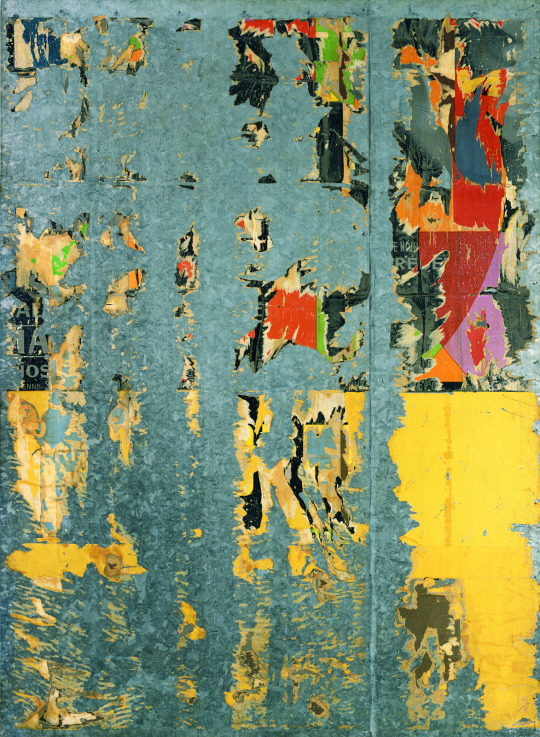
Raymond Hains, Tôle, 1961 [Fondation Gandur pour l'Art, Genève. © Jacques Villeglé. Photo: © Maurice Aeschimann]
167 notes
·
View notes
Photo
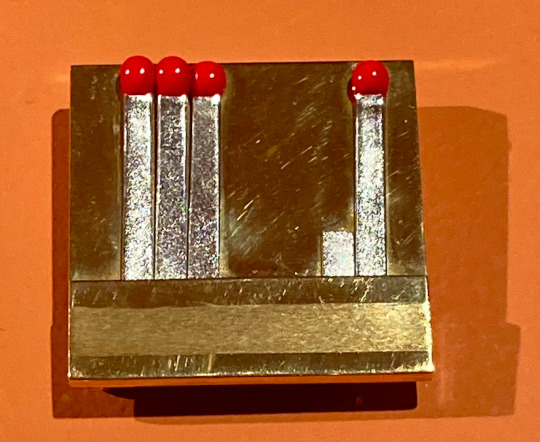
Broche "Seita 1" de Raymond Hains (2005) présentés à l'exposition “Ornamentum : Bijoux d'Artistes | Collection Diane Venet” de la Fondation Boghossian dans la Villa Empain, Bruxelles, mai 2023.
9 notes
·
View notes
Text
2024 Pittsburgh Pirates Famous Relations
#27 Marco Gonzales: Son of Northern Colorado Owlz manager Francisco Gonzales.
#23 Mitch Keller: Brother of Asheville Tourists P Jon Keller.
#51 David Bednar: Brother of AZL Giants P Will Bednar.
#15 Oneil Cruz: Son of former Estrellas Orientes P Rafael Cruz.
#13 Ke'Bryan Hayes: Son of former FCL Phillies assistant coach Charlie Hayes & brother of Bakersfield Blaze P Tyree Hayes.
#43 Ryan Borucki: Son of former Birmingham Barons 3B Raymond Borucki.
Hitting coach Andy Haines: Brother of San Francisco Giants director of player development Kyle Haines.
Bench coach Don Kelly: Son-in-law of former Columbus Clippers P the late Robert Walker & brother-in-law of pirates analyst Neil Walker & former Lakeland Flying Tigers P Matt Walker.
Assistant hitting coach Christian Marrero: Brother of former Orix Bafarōzu 1B Chris Marrero.
#Sports#Baseball#MLB#Pittsburgh Pirates#Celebrities#Colorado#Iowa#MiLB#Asheville Tourists#Pennsylvania#Arizona#Dominican Republic#Texas#Mississippi#Florida#Illinois#Birmingham Barons#San Francisco Giants#Columbus Clippers#TV Shows#Lakeland Flying Tigers#Japan
1 note
·
View note
Text
Research seminar: Postmemory and the archaeology of the ghost.
My subject: The Witness Blanket (2019) by Carey Newman
(English translation from French)
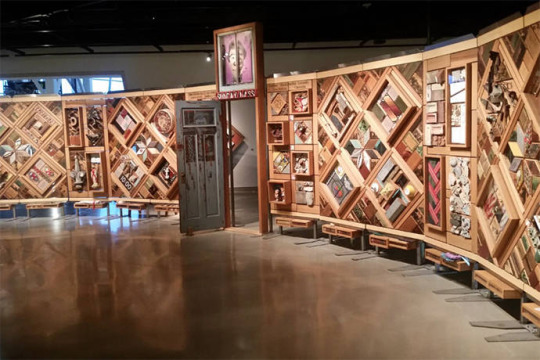
Carey Newman, The Witness Blanket, 2019, wood sculpture with inlay of various objects, Human Rights Museum, Winnipeg, Canada, 3.23 m x 11.96 m.
During the research seminar on postmemory and the archaeology of the ghost, I chose to work on Carey Newman's The Witness Blanket (2019). Newman's father is indigenous to the Hayalthkin'geme community. His father was separated from his family and sent to one of the rehabilitation residential schools that were located across Canada. He never told his children much about what happened to him or the violence he suffered.
I will present a short history of the residential schools, an analysis of part of Newman's work, and a conclusion. I will use testimonies from the artist's book, testimonies from other survivors, and articles about the children's living conditions.
To begin with, I need to outline the origins of schools for Aboriginal children. In 1876, Canada introduced the Indian Act. This law made it possible to control and discriminate against indigenous peoples. As Jacinthe Dion, Jennifer Hains, Amélie Ross, and Delphine Collin-Vézina explain, the Act was made up of several points: "measures linked to the colonization of Aboriginal peoples led to various traumas such as the loss of territory, confinement to reserves, drastic changes in lifestyles, the loss of traditional healing ceremonies and rituals, and the advent of residential schools to educate young people". The authors recount the period of operation of: "These institutions were set up by the Canadian government with the collaboration of religious institutions around 1880 and operated until the last school closed in 1996. According to Marie-Pierre Bousquet, Canada had: "Officially, there were one hundred and thirty-nine residential schools in Canada, at least recognized by the federal government for the purpose of paying compensation to former students […] In 1920, a new section of the Indian Act made schooling compulsory for Amerindian children aged 7 to 15". These boarding schools were camps set up to educate (according to the white colonizers) the indigenous people, or rather to destroy their identities and cultures.
The children separated from their families had to live in very harsh conditions in these institutions, leaving the after-effects described by Jean-François Roussel: "cultural and linguistic uprooting, serious damage to family ties, psychological, physical, sexual and spiritual violence". Many children died in these schools. There is no exact number, but Raymond Frogner and Dominique Fooisy-Geoffroy have drawn up a list of the victims:
"Around 150,000 children attended residential schools;
More than 4,000 confirmed deaths;
400 unmarked burial sites;
32% of deaths where names were not recorded;
23% of deaths where sex was not recorded;
49% of deaths where the cause of death was not recorded;
And, finally, several abandoned cemeteries".
All this data was used by the Truth and Reconciliation Commission of Canada (2008 - 2015), to ensure that the government apologised to the victims of the residential schools (the survivors and the dead), to their families and communities, and also to compensate the victims. This act was recognised as cultural genocide, defined as "the destruction of structures and practices that enable groups to live together as groups".
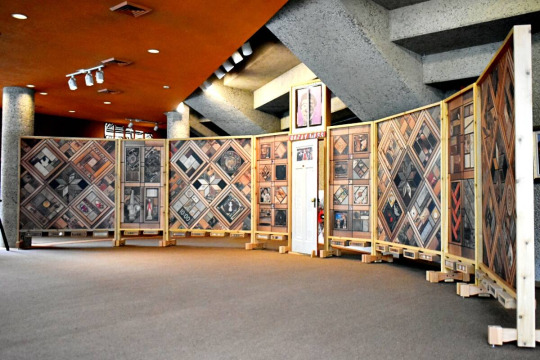
Carey Newman, The Witness Blanket, 2019, wood sculpture with inlay of various objects, Human Rights Museum, Winnipeg, Canada, 3.23 m x 11.96 m.
It is in this context of recognition of the crime committed by the Canadian government and the church, but also of reconciliation, that the artist Carey Newman has worked on his work: The Witness Blanket (2019) in partnership with the Canadian Museum for Human Rights. The work is a sculpture. It is made from objects such as bricks, pieces of wood, and a door. They are salvaged from the rubble of residential schools, but also from donations by survivors of these schools, such as photos, letters, and personal objects from that era. All these elements are mounted and organized like a patchwork quilt on eight wooden panels. The motifs can be found in the culture of certain indigenous peoples. In the center of the room is a wooden door, also from a boarding school. Above the door is a copy of the Indian Act. To create the motif, the artist placed the objects in the same way. I decided to concentrate on three objects.

Carey Newman, The Witness Blanket, 2019, wood sculpture with inlay of various objects, Human Rights Museum, Winnipeg, Canada, 3.23 m x 11.96 m, close-up of the bowl.
In the sculpture is a yellow bowl representing the eating disorders of the father passed on to his children. This transmission is defined as post-memory, a term explained by literature professor Maria Hirsch: "The non-verbal, non-cognitive acts of memory transfer that occur within families in terms of symptoms. The painful psychosocial conditions experienced by parents in the past […] that children hear, see and feel in the present. Memory is tangible. It is embodied". With Newman's father, it was the fear of going hungry: Even today, my father's experience of eating at boarding school affects me and my family. For example, because I was taught not to waste food, it's still difficult for me not to eat everything I'm served […] When I had my own child, I realized that I was instilling in him the same harmful eating habits". The reason for this trauma of going hungry is the conditions in which these children lived. In Newman's book, there are testimonies from survivors. One of them explains what the victims ate: "the pupils were given moldy bread and cold, watered-down soup". There is also the punishment suffered by the father, which was passed on: "In boarding schools, pupils were often forced to finish everything on their plates. That's also what happened in my house when I was a child. I was told that if I didn't eat my dinner, I'd be served the same thing for breakfast". This simple story about food is passed down from generation to generation. If the generation that is the victim of this violence cannot close this chapter in its history (close, not forget), it runs the risk of passing on the same violence to the next generation. This bowl represents a trauma bequeathed to the next generation.
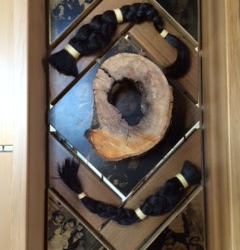
Carey Newman, The Witness Blanket, 2019, wood sculpture with inlay of various objects, Human Rights Museum, Winnipeg, Canada, 3.23 m x 11.96 m, close-up of the hairs.
In The Witness Blanket (2019), hair has been hung on one of the panels. This hair belongs to the artist's sisters. The reason for the presence of the girls' hair is to pay homage to their cultures. In indigenous culture, hair is very important. According to Newman, hair "represents strength and is only cut in times of mourning". Hair is an important element in indigenous culture. That's why, when children were sent to boarding schools, the heads of these institutions (priests and nuns) cut their hair with great violence. As writer and survivor, Bev Sellars explains: "Our hair was cut and we were 'deloused' with the pesticide DDT […] Although we held a towel over our face, some of the DDT fell out after we removed the towel, stinging our eyes and giving us a horrible taste". The aim was to humanize the children and create a racist stereotype of the dirty native.
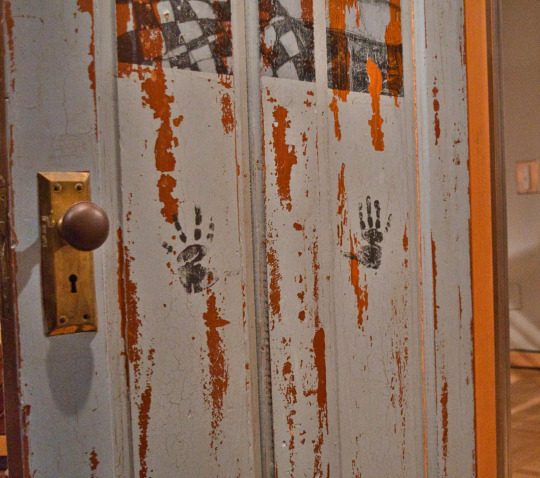
Carey Newman, The Witness Blanket, 2019, wood sculpture with inlay of various objects, Human Rights Museum, Winnipeg, Canada, 3.23 m x 11.96 m, close-up of the door.
The door at the centre of the sculpture is part of the rubble of an infirmary at St. Michael's boarding school. Carey Newman chose it first and foremost for its sombre history: "because of the abuses committed in the boys' infirmary at St. Michael's […]". Although the artist does not go into detail about what might have happened in the infirmary, we can quickly imagine what might have taken place. In 2018, the National Centre for Truth and Reconciliation conducted a survey: "One in two Canadians is unaware of the existence of residential schools". The door in Newman's work is not closed, to represent a past that must not be forgotten. There are two handprints on the door: they are the handprints of the artist's daughter.
It's a way of including several generations in the same project, and it's also a way for these families to share their common histories. As Sarah Henzi, a professor of indigenous literature, describes it: "The legacy of the historical burden of different systems of assimilation reminds us that anger, pain, shame and racism are passed on from one generation to the next". Newman's sculpture helps to shed light on a forgotten part of history, while at the same time addressing the psychological plight of the victims and their families.
Bibliography
Books:
NEWMAN C. & HUDSON K., The Witness Blanket: Truth, Art and Reconciliation, Victoria, Orca Book Publisher, 2022.
SELLARS B., They Called Me Number One: Secrets and Survival at an Indian Residential School, Vancouver, Talonbooks, 2013.
Journals articles:
BOUSQUET M-P., « La constitution de la mémoire des pensionnats indiens au Québec », Recherches amérindiennes au Québec, N°46, 2016, p. 165-176.
DION J., HAINS J., ROSS A. & COLLIN-VÉZINA, « Pensionnats autochtones : impact intergénérationnel », Enfance et famille autochtones, N°25, 2016, p. 1-25.
HENZI S., « La grande blessure. Legs du système des pensionnats dans l’écriture et le film autochtones au Québec », Recherches amérindiennes au Québec, N°46, 2016, p. 199-211.
NICOLAOU A., « Postmemory at work in Maria Anastssiou’s Notes: Remembered and Found », Einkofi, 2023, p. 1-6.
ROGNER R. & FOISY-GEOFFROY D., « Qui sont ces enfants perdus ? Origine et conception du registre des noms des enfants autochtones décédés dans le système des pensionnats du Canada, selon le Centre national pour la vérité et conciliation », Archives, N°48, 2019, p. 149-159.
ROUSSEL J-F., « La Commission de vérité et réconciliation du Canada sur les pensionnats autochtones », Théologiques, N°23, 2015, p.31-58.
Podcast:
FONTAINE F., 21 décembre 2018, La reconnaissance du génocide culturel au Canada, [ émission de radio ], radiofrance, consulté le 04 avril 2023 à l’adresse suivante : https://www.radiofrance.fr/franceculture/la-reconnaissance-du-genocide-culturel-au-canada-8280696
#artwork#literature#indigenous#indigineous people#art critique#college#art university#dissertation#french
2 notes
·
View notes
Text
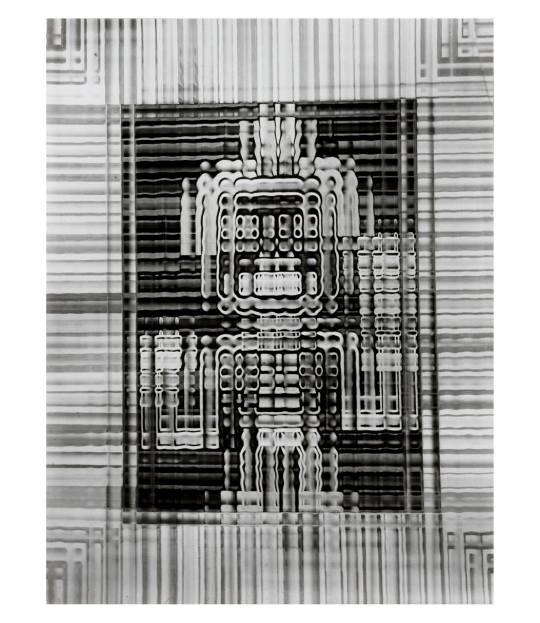
"La Javanaise" by Raymond Hains, 1948
gelatin silver print
24" x 18¼ inches
5 notes
·
View notes
